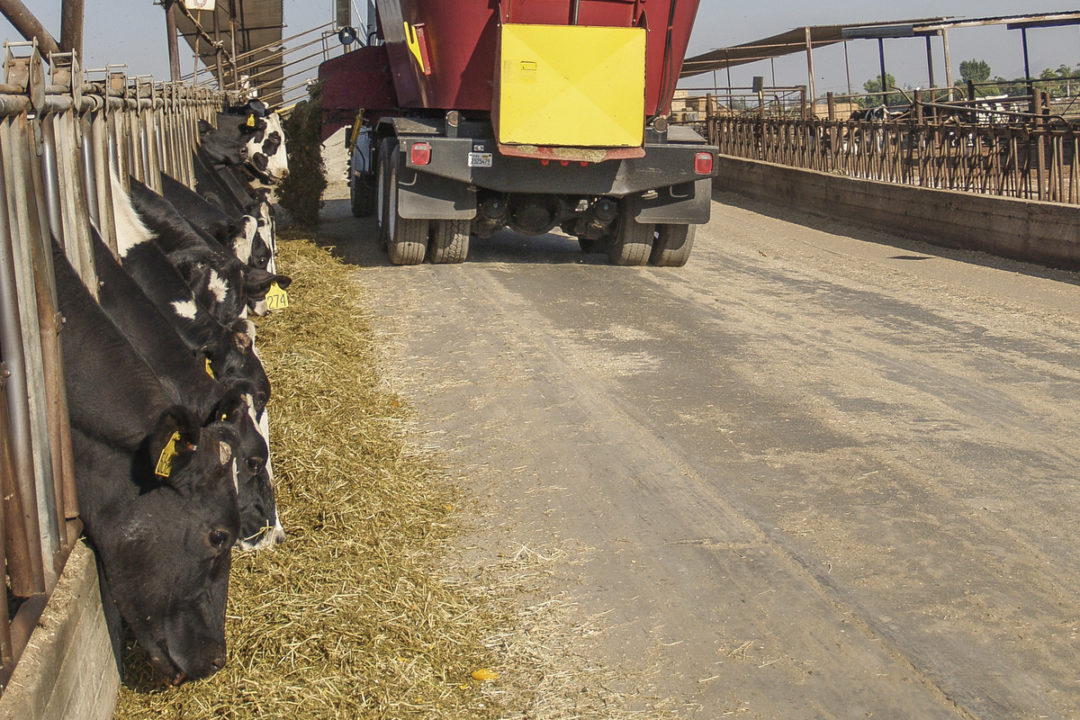“Normal” may not seem very exciting, but when it comes to managing dairy cattle, it can be a very good thing.
Probiotics have been used extensively in animal production for many years. The technical definition of a probiotic is “live microorganisms, which when administered in adequate amounts, confer a health benefit on the host.” A more practical definition might be “a tool used to support proper function of the gastrointestinal tract (GIT), ensuring that the greatest possible percentage of animals in the herd are healthy and normal.” Effective probiotics will do these things. The use of probiotics in livestock feeds has increased considerably in the last two decades, as they are principally associated with reducing the incidence and severity of adverse health events and improving animal performance and production efficiency.
Probiotics can enhance GIT health by stimulating the development of a healthy microbiota (predominated by beneficial bacteria), preventing enteric potentially harmful bacteria from colonizing the intestine, increasing digestive capacity, lowering the pH and improving mucosal immunity.
Bacillus-based probiotics have become more popular over the last few years because of their effectiveness in supporting a healthy GIT and improving nutrient digestibility, while being very hearty and resilient in many different feed applications (milk replacers, pelleting, liquid feeds, blocks, mineral and premixes, etc.). Many strains of some bacillus species are currently used as probiotic dietary supplements in animal feeds. Bacillus is a genus of gram-positive, aerobic or facultative anaerobic, endospore-forming bacteria. The ability to form spores is beneficial and allows for long-term storage without the loss of viability compared to non-spore-forming bacteria. Also, spores are able to survive the harsh, low pH of the GIT and can reach the small intestine to exert their probiotic properties. One area for potential use of bacillus-based probiotics is with dry cows.
Importance of the dry period
Why do cows need a dry period? First, the dry period is important for the rest and regeneration of tissues in the udder. Studies have shown that a short or absent dry period reduces the number of secretory cells in the udder, and therefore subsequent milk production is reduced. Second, the dry cow is fed a high-fiber roughage diet, which helps restore the muscle tone of the rumen and allows time for any lesions in the liver to shrink. Thus, dry cows should be fed longer-stemmed forages or pasture to stimulate cud chewing and ultimately increase rumen contractions and muscle tone. In addition, three-quarters of the growth of the calf occurs during the last two months of gestation, so the dry cow needs to be fed to maintain herself and allow the calf inside her to grow properly.
The transition from lactating to dry poses challenges for the cow. Cows may face several problems during the dry period, including an increased risk of intramammary infections and stress due to regrouping and competition. These problems are likely to have negative effects on dry cow herd health and performance. In addition, dry cows go from a moderate level of forage in a lactating ration to a high-forage ration, with forages typically that are higher in fiber and lower in digestibility. One of the potential benefits of using an effective bacillus-based probiotic for dry cows is increases in fiber digestibility. Many bacillus species produce enzymes to break down feed components for their use, but these same nutrients can be used by the cow, allowing her to get more out of the feed.
The stress of pen movements and, in some cases, poorer housing can lead to immune challenges and susceptibility to potentially harmful bacteria that could negatively affect the cow and calf.
Effective bacillus probiotics have been shown to impact the immune system itself. They can help support gut integrity and improve the tight junctions between the cells in the gut, helping to combat "leaky" gut and other intestinal integrity issues. Bacilli bacteria are also known as “motile hunters and killers.” They can attack potentially harmful bacteria by producing and releasing certain types of active compounds that kill some of these bacteria, but don’t harm many of the beneficial bacterial species. Bacillus-based probiotics can tackle many of these potentially harmful bacteria rather than call on an active immune response from the cow, which can require energy and take nutrients away from the cow and developing calf.
There are thousands of strains of bacteria, and each can have a different effect and sometimes no positive effect. For best results, use these four main criteria when selecting a probiotic:
- Specific strain: Probiotics should be a specifically selected strain and must have proof of a production or a health outcome benefit. Ask the supplier for peer-reviewed data on the product and proof of mode of action and benefit to the cow-calf.
- Viable: Choose a probiotic containing live or viable bacteria. These products should have a minimum viability guarantee or cell count on the label and, more importantly, must maintain its viability after feed/supplement preparation.
- From a reputable manufacturer: Make sure the production and handling processes preserve the probiotic activity throughout the entire production and distribution chain.
- Fed every day: Include probiotics in livestock rations every day to maintain an effective level in the GIT.
The economics of feeding an effective bacillus-based probiotic are usually very positive. Most bacillus-based probiotics cost less than 7 cents per head per day. With positive effects on feed digestibility, immune function and potentially harmful bacteria inhibition, the payback on the investment can be very positive. But in order to reap those benefits, make sure the supplier/manufacturer provides information on:
- Researched and described modes of action with repeatable research
- Ability to inhibit a wide range of potentially harmful bacteria
- Survival of the probiotic through the GIT
- Viability of the bacillus with different manufacturing processes (milk replacers, pellets, tubs, blocks, liquid feeds, vitamin and trace mineral mixes, etc.)
While “supporting normal” may not sound that exciting, look at some definitions of it in the dictionary.
- Generally free from physical or mental impairment or dysfunction: exhibiting or marked by healthy or sound functioning
- Not exhibiting defect or irregularity
- Within a range considered safe, healthy or optimal
I think all of us who deal with dairy cattle would take any of those definitions and would like to apply them to the herds that we work with. Effective bacillus-based probiotics can help us do just that.
References omitted but are available upon request by sending an email to the editor.











